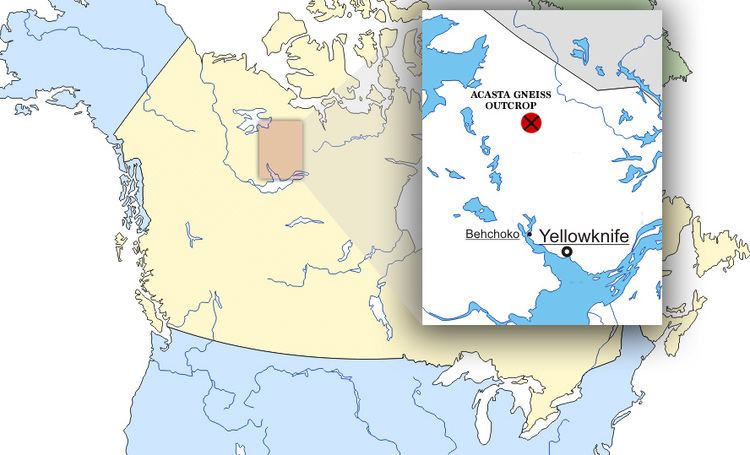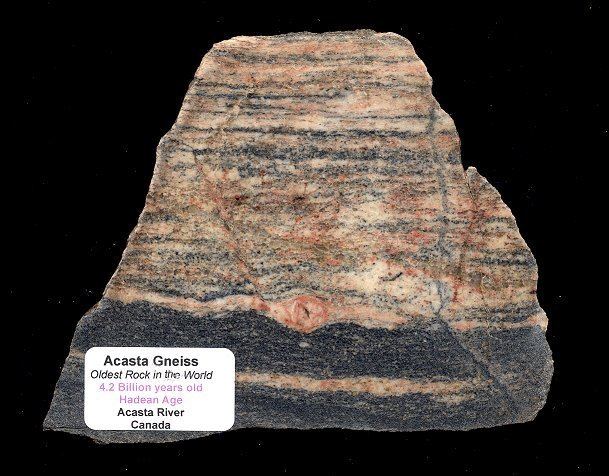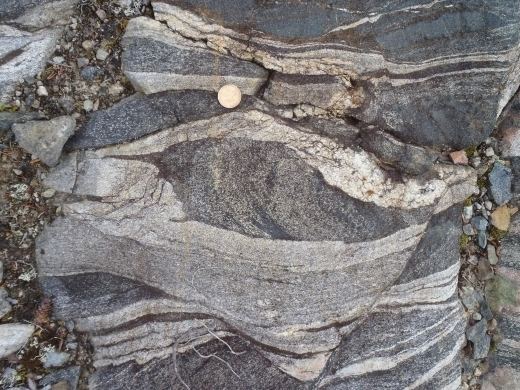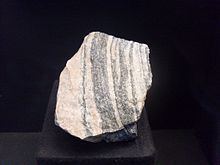 | ||
Acasta gneiss
The Acasta Gneiss is a tonalite gneiss in the Slave craton in Northwest Territories, Canada. The rock body is exposed on an island about 300 kilometres north of Yellowknife. The rock of the outcrop was metamorphosed 3.58 to 4.031 billion years ago and is the oldest known intact crustal fragment on Earth.
Contents
- Acasta gneiss
- Searching for the oldest rock in the world acasta gneiss p2
- Formation
- Contention for record
- Exhibit
- References

First described in 1989, it was named for the nearby Acasta River east of Great Bear Lake. The Acasta outcrop is found in a remote area of the Tłı̨chǫ people land settlement. It is the oldest known exposed rock in the world.

Searching for the oldest rock in the world acasta gneiss p2
Formation

The metamorphic rock exposed in the outcrop was previously a granitoid that formed 4.2 billion years ago, an age based on radiometric dating of zircon crystals at 4.2 Ga. The Acasta Gneiss is important in establishing the early history of the continental crust. Acasta Gneiss was formed in the Basin Groups unofficial period of the Hadean eon, which came before the Archean: see Timetable of the Precambrian.
Contention for record

In 2008 an age of 4.28 billion years was reported for an outcrop in the Nuvvuagittuq Greenstone Belt on the eastern shores of Hudson Bay, 40 kilometres south of Inukjuak, Quebec, Canada. However, the dating method used did not involve similar radiometric dating of zircon crystals and it remains somewhat contentious whether the reported date represents the age that the rock itself formed or a residual isotopic signature of older material that melted to form the rock.

Mafic rocks from the Nuvvuagittuq Greenstone Belt have recorded isotopic compositions that can only be produced in the Hadean (i.e. older than 4 billion years ago) and the complete isotopic study of all the lithologies included in the Nuvvuagittuq Greenstone Belt suggests that it was formed nearly 4.4 billion years ago.
Exhibit
In 2003 a team from the Smithsonian Institution collected a four-tonne boulder of Acasta Gneiss for display outside the National Museum of the American Indian in Washington, D.C. Another sample is on display in the Museu de Geociências of the University of Brasília, Brazil.
